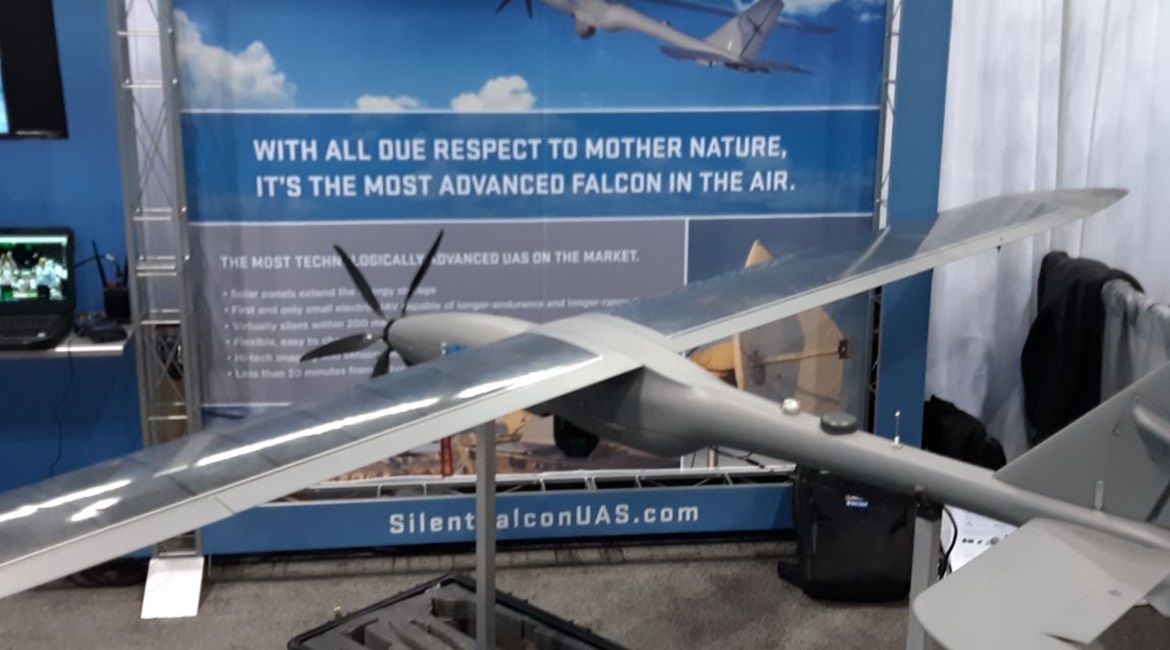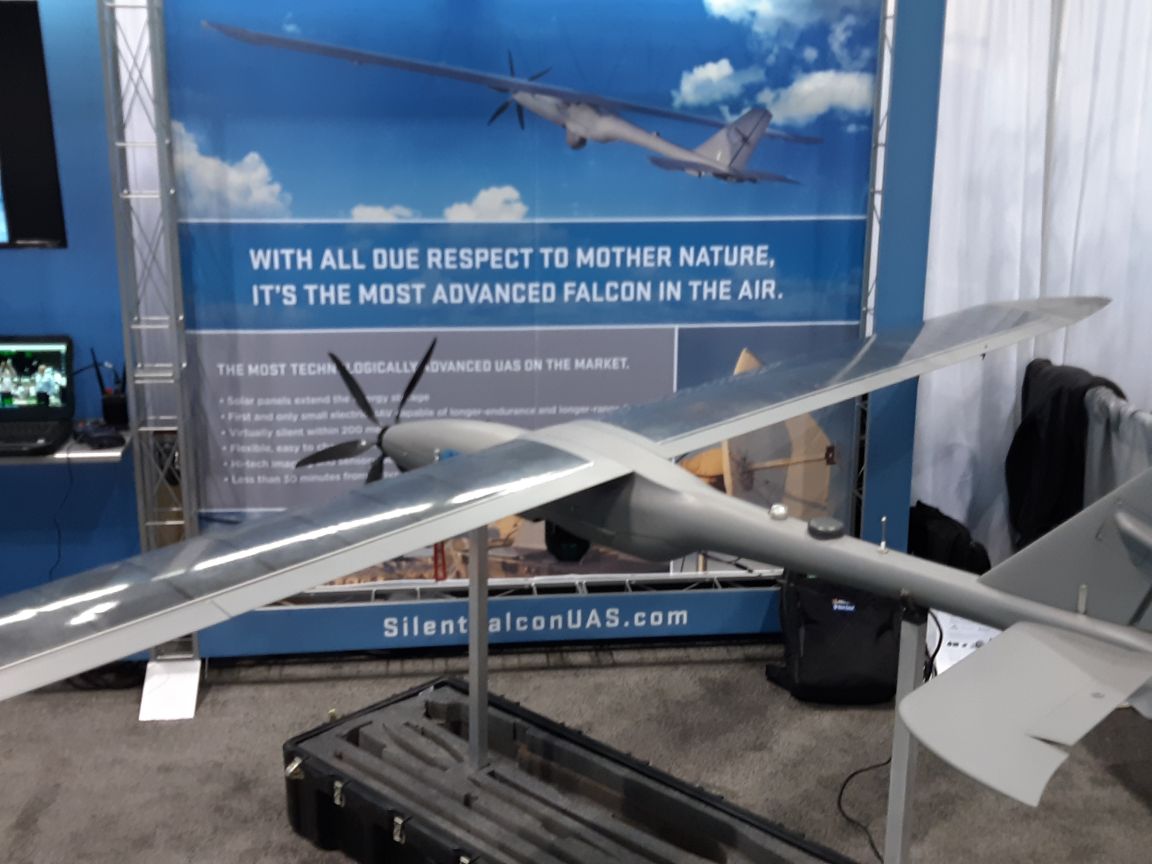
Silent Falcon is targeting further Pentagon work for its namesake solar electric Group 2 unmanned aerial vehicle (UAV) having already secured a Defense Advanced Research Projects Agency (DARPA) contract.
John Brown, company chairman, told Jane’s on 1 May that DARPA’s Stand-off Ubiquitous Power/Energy Replenishment-Power Beaming Demo (SUPER PBD) programme will put specialised photo voltaic material on the tail of the Super Falcon and shoot the material with a laser. This photo voltaic material, he said, will convert the laser to electrical energy and will recharge the batteries during flight.

Silent Falcon has been awarded a DARPA contract for its namesake solar electric Group 2 UAV, here pictured on 1 May at the 2019 AUVSI Xponential conference in Chicago. (IHS Markit/Pat Host)
Brown said at the 2019 AUVSI Xponential conference that photo voltaic material, while commonly referred to as solar panels, is different as it is tuned to a specific frequency –laser. Solar panels, he said, are tuned to all light frequencies.
Using laser to recharge an electric power UAV while in flight could allow for indefinitely long flight times by using concatenated “fly” and “fly and charge” cycles, removing the need to land to refuel, according to a Super Falcon statement. The other companies participating in SUPER PBD are Optonicus LLC, SolAero Technologies Corp, and Ascent Solar Technologies.
Brown said Super Falcon is targeting “large” upcoming US Marine Corps (USMC) and US Special Operations Command (USSOCOM) requests for proposals. The Super Falcon, he said, has been sold to non-US militaries, though he declined to elaborate. The Super Falcon has been used in fly-offs in South Korea, Chile, and Canada, Brown added.
Looking to read the full article?
Gain unlimited access to Janes news and more...






